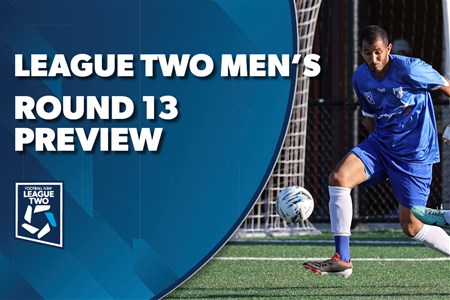Connect Before You Coach

An earlier article from the Technical Area focused on making training the best part of your players week. For me, one of the best ways to contribute to this is to build a positive rapport with your players, because if you can develop a connection with your players, they’re more likely to want to come to training and learn about football whilst they are there!
Below I’ll highlight two ways I’ve tried and tested connecting with my players, that you can try as well.
Get to know your players!
It might seem like a simple and straight forward idea, but it can be one that is often overlooked with the mental load a coach experiences. We are often thinking about how many players we have for the session, how we might get it to work if one or two players don’t show up and what we might say during the session. As a result, if you’re not intentional about taking the time to get to know your players, you might find that you’re thinking more about the session and not the players in your session.
To combat this, I have found that the best way to start the session is with a simple arrival activity, that will allow you to get around to players and ask them a few questions. I usually set up a juggling activity and ask players what their record is and then set each player the goal of trying to beat that record by 2 or 5 or even 10 juggles (depending on their current record). I also tell players that I’ll be recording their scores at the end of the time limit, which usually results in the players being more deliberate and focused on the task (it also allows me to see how their juggling is progressing throughout the season). I then target at least two/three players to speak with one-on-one, writing down the players responses in my notebook. This allows me to refer back to the information during the season, whether it be as players arrive at training or a game, I might be able to ask them a question relating to that one-on-one discussion, and to further build the rapport with players, to have discussions around both training and aspects outside of football.
My go to questions include:
- What school do you go to?
- What is your favourite book/movie/video game?
- Who is your favourite team and player?
- What is your favourite position and why?
- What is your least favourite position and why?
The last one question is one I’ve taken from John O’Sullivan from at Changing the Game Project and it is get your players to finish this sentence: “One thing I wish my coaches knew about me that would help them coach me better is…” This one usually isn’t one that can be answered straight away, so I get players to think about it and come back to me. If they struggle to say it, they can write it down on a piece of paper and share it with me later.
Handshakes
As a mad Tottenham fan, I loved watching Son Heung Min and Dele Alli’s handshakes after they scored goals in the 2016/17 season. I found that using the handshakes with my players as a teambuilding activity started to develop further connections between the players themselves as well as with me, and even made training sessions more enjoyable.
To introduce handshakes, I get players to come up with their own handshakes with their teammates. It might be a partner activity, particularly with players in the team who might not normally partner up. They might spend 5 minutes coming up with a handshake they can for a celebration and/or greeting. During the session, I like to give lots of opportunities for the players to then use their handshakes. It might be as part of a finishing activity, or through playing a 2v2 competition, where they are teamed up with their partner and after every goal, they can practice their celebration. The more players get to use it, the more engaged with it they will become.
Over the next few sessions, I encourage players to use their handshake during skill training parts of the session or skill games and even give them time in warmups to practice their handshakes. During this time, I will get players to come up with handshakes that I have to learn and can do with them at the end of a session before they leave. It is definitely not easy learning handshakes with a whole team, and takes time to learn them, so you might have to wrap up 5 minutes early to give yourself time to learn them. It might take a few weeks, but once you do start to learn those handshakes, players invariably are more connected and excited to use them with you. It also gives an added layer of enjoyment to training sessions when goals are scored!
Hopefully you can use these strategies to get to know your players better and to help make your session the best part of their week, through greater connection with your players!
Written by Luke Harris – Head of Coach Education at Lindfield FC.


